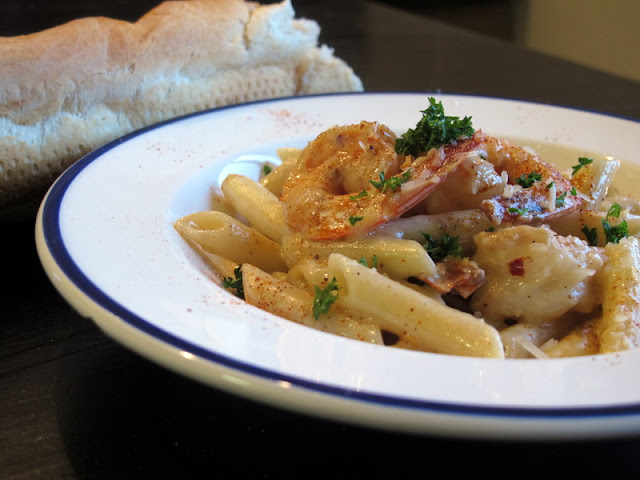The filet mignon. The most irresistible cut of meat ever carved out of a cow's carcass.
Ok so maybe that's not true...but definitely the most tender.
Don't argue with me here, I'm talking about raw. I don't care about any braising argument, this stuff is tender. It's also the most prestigious and most expensive cut of beef. At $18 a pound it better be freaking delicious, I tell you that. Thankfully, mine was. Except for this piece of inedible fat in the middle. But besides that, hands down best steak of the year.
This is a really easy recipe even though it may seem daunting. The one thing you don't want to do is overcook a filet and the hardest part is that they always look like they're done after being cooked on both sides for 30 seconds. The problem is that they're so tall, so the middle could still be raw when the tops are burnt. It's not that good of an idea to completely sear it, then serve it like you would a thin new york strip. I decided to pair the steak with a sauce called gremolata. It's an Italian accompaniment that consists of lemon zest, garlic, parsley, and other herbs.
Enough of this. Let's get down to business. Let's do the dirty...here's the recipe list.
- One filet mignon cut into two. (really it's whatever size you want, I used a .8lb filet cut into two)
- Three tblsp of butter
- Three cloves of garlic
- Salt n peppa
- For the Gremolata - large handful of parsley, two garlic cloves, the zest of half a lemon, olive oil
- White asparagus (as many as you want)
Step 2 - take a picture of your steaks because they won't look like the most perfect red meat you've ever seen for much longer.
damn.
Step 3 - (not pictured) lay your white asparagus down all facing the same way on top of a foil lined cookie sheet. Drizzle with olive oil and then salt and pepper them liberally. Put in the oven at 450
Step 4 - place your steaks in a pan with three tblsp of butter and three crushed cloves of garlic over medium high heat
Step 5 - here is basically the last step. You're going to want to cook the steaks until they're medium rare. Go ahead and make an A-OK! sign with your hand. Feel the fleshy part of your thumb, that should be how your steak feels. Here's a link to pictures if you don't understand: here
Look at that sear. D. A. M. N. Ok, so that's not amazing, but it's alright. I'm going to give y'all a secret technique. Don't tell anyone! While cooking your steak, tilt the pan backwards until all the butter goes to one side. Take a spoon and spoon this on the top of the meat while it's cooking. That way you now have the butteriest steak imaginable. Yum. And throw those 'lil garlics on top once in a while to give off some nice flavor.
Well there you go, take your asparagus out of the oven when it looks good and you're done! Put your filet in the middle of the plate, put two asparagii on top (but really more for later, this is just for presentation hehe), and then drizzle the sauce in key points on the plate. Perfect. I love pairing the white asparagus with the green sauce because I usually use a white cream sauce on my steaks with green asparagus, it helps change things up!
Here it is again in case you forgot! Feel free to comment if you have any questions.

























